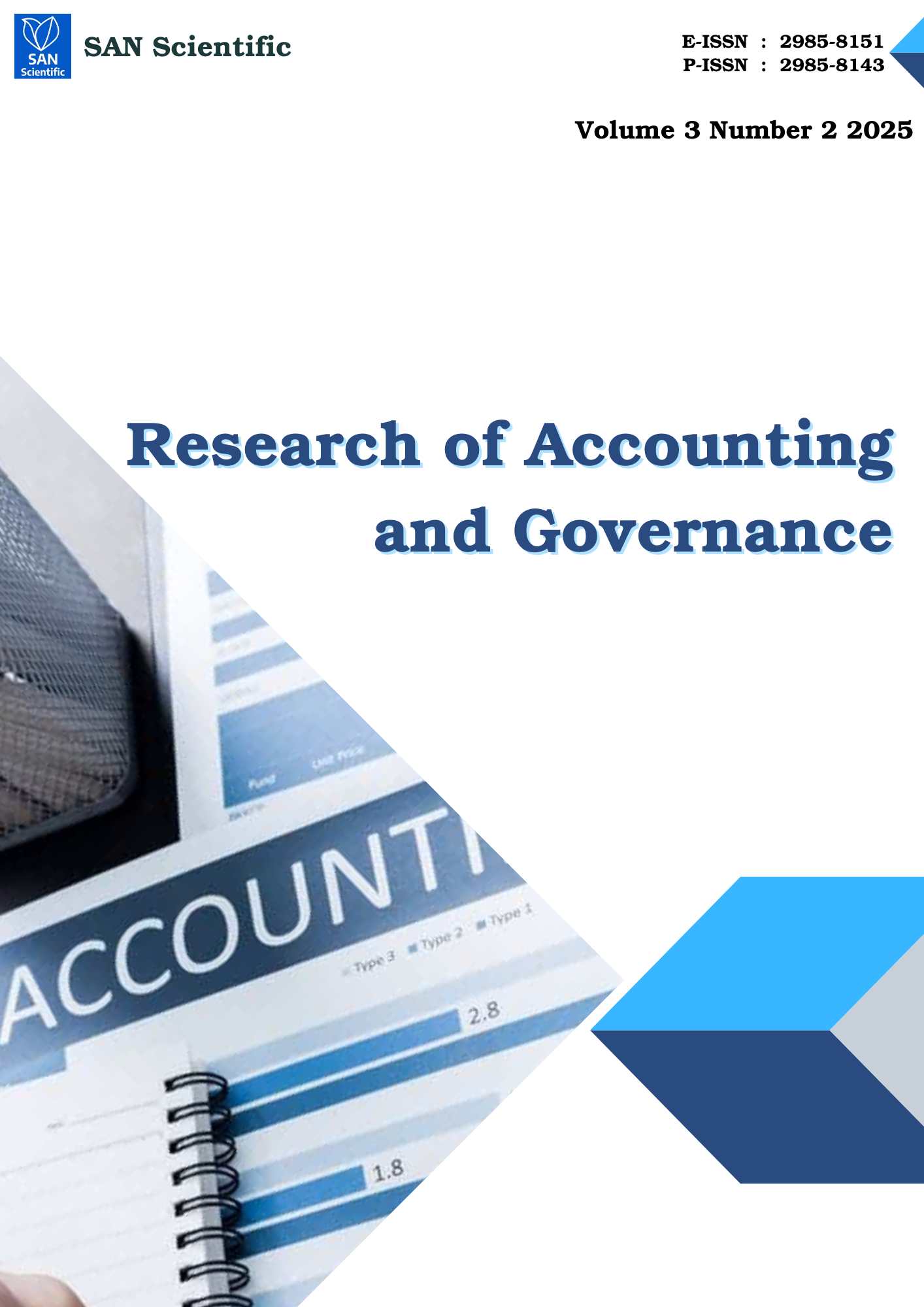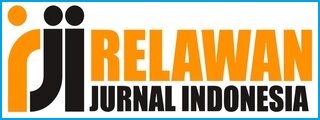Branch Grading as a Framework to Improve Business Growth and Bank Branch Performance
DOI:
https://doi.org/10.58777/rag.v3i2.473Keywords:
branch grading, banking performance, business growth, performance evaluation, strategic managementAbstract
This study examines the impact of implementing a branch grading system on business performance across 46 branches of Bank "X" over a four-month period (August–October 2024). Using a descriptive quantitative approach, the study analyzes monthly performance data, including funding, lending, profit before tax (NPBT), number of accounts, transaction volume, and local market potential. The findings show that 14 branches (30.4%) improved their grade by September 2024, just two months after implementation. The grading system effectively aligns internal performance with external market potential, enhancing managerial accountability, optimizing resource use, and improving customer satisfaction. It provides a strategic, data-driven tool for performance monitoring and targeted growth. The results suggest that grading can guide resource allocation, performance-based incentives, and policy development, especially for branches with high market potential but low output. This study offers empirical evidence supporting the use of integrated internal-external metrics in branch management. It also contributes to the limited research on data-driven performance evaluation in Indonesian banking and highlights the model’s relevance amid digital transformation and branch rationalization efforts. The proposed grading system is practical, replicable, and valuable for strategic decision-making in branch optimization.
References
Aba, F. X. L., & Junior, A. (2022). The Efficiency of Local and International Banks in Indonesia: A Comparison Using DEA and Tobit. Fair Value: Jurnal Ilmiah Akuntansi dan Keuangan.
Abbasi, W. A., & Weigand, H. (2017). The impact of digital financial services on firm performance: A literature review. Procedia Computer Science, 121, 476–483. https://doi.org/10.1016/j.procs.2017.11.063v
Ajija, S. R., Yasin, M. Z., & Albra, R. (2023). Indonesian Banking Efficiency: Transmission to Financial Stability Facing ASEAN Economic Community. Jurnal Ekonomi Pembangunan.
Azzabi, A., & Lahrichi, N. (2023). Determinants of bank performance: A systematic literature review. International Journal of Finance and Banking Studies, 12(2), 34–52. https://doi.org/10.20525/ijfbs.v12i2.700
Bank for International Settlements. (2022). Trends in Global Banking Infrastructure.
Doumpos, M., Zopounidis, C., Gounopoulos, D., Platanakis, E., & Zhang, W. (2023). A multidimensional approach to measuring bank branch efficiency. European Journal of Operational Research.
Financial Innovation. (2024). Multi-Criteria Decision Models in Branch Evaluation.
Grifell Tatje, E., & Lovell, C. K. (1997). Sources of Productivity Change in Spanish Banking European Journal of Operational Research.
Grifell-Tatje, E., & Marques-Gou, P. (2015). Internal performance evaluation: The case of bank branches. Barcelona School of Economics Working Paper No. 840. https://bse.eu/research/working-papers/internal-performance-evaluation-case-bank-branches
Hasssan, M. K., Rabbani, M. R., & Abdulla, Y. (2021). Stability of Islamic Bank Efficiency in Indonesia and Malaysia: The Effects of COVID-19. Journal of Islamic Monetary Economics and Finance.
Insightful Banking. (2024). Bank branch performance benchmarking best practices. Retrieved from https://www.insightfulbanking.com
Ischak, S. A., Maarif, M. S., Hermadi, I., & Asikin, Z. (2024). Efficiency and Competitiveness of Banking in Indonesia Based on Bank Core Capital Group. Economies, 12(12), 345.
Kassani, S. H., Kassani, P. H., & Najafi, S. E. (2018). Introducing a hybrid model of DEA and data mining in evaluating efficiency: Case study of bank branches.
Kassani, S. H., Kazemzadeh, R. B., & Makui, A. (2018). A hybrid model using DEA, clustering and polynomial pattern classifier for evaluating efficiency of bank branches. Expert Systems with Applications, 107, 135–147. https://doi.org/10.1016/j.eswa.2018.04.017
Kayvanfar, V., Baziyad, H., Sheikh, S., & Werner, F. (2022). Efficiency evaluation of banks with many branches using a heuristic framework and dynamic DEA: A real case study.
Kayvanfar, V., Jafarzadeh Ghoushchi, S., & Askarzadeh, N. (2022). A heuristic framework based on dynamic DEA for evaluating bank branches. Journal of Industrial Engineering International, 18, 77–89. https://doi.org/10.1007/s40092-021-00426-8
KPMG. (2022). Reimagining the bank branch: Blending digital and physical banking. Retrieved from https://home.kpmg/xx/en/home.html
McKinsey & Company. (2022). How banks can reinvent branch networks for a digital world. Retrieved from https://www.mckinsey.com
Otoritas Jasa Keuangan. (2024). Statistik Perbankan Indonesia (SPI) 2022–2024. Retrieved from https://www.ojk.go.id
Paes de Faria, F., Ensslin, L., & Ensslin, S. R. (2020). A constructivist model for evaluating front-office bank employees. Technological and Economic Development of Economy, 26(6), 1339–1366. https://doi.org/10.3846/tede.2020.13241
Parsaulian, R., & Chalid, D. A. (2021). Bank Branch Closure Assessment Using DEA. JEJAK: Jurnal Ekonomi dan Kebijakan, Vol.14 No.1.
Putri, F. I. (2024). Islamic Bank Efficiency: Research Path from Scopus Database. Economics and Sustainability.
Rahman, A. A., & Sarea, A. (2020). Branch performance evaluation using Balanced Scorecard approach: Empirical evidence from the banking sector. International Journal of Business and Management, 15(5), 50–61. https://doi.org/10.5539/ijbm.v15n5p50
Right Angle Solutions. (2023). How balanced scorecard methodology empowers bank managers to optimize branch performance with KPIs. Retrieved from https://www.rightanglesolutions.com
Zavadskas, E. K., Tamošaitienė, J., & Turskis, Z. (2024). MCDM approach for evaluating commercial bank efficiency in Pakistan. Financial Innovation, 10(1), 18. https://doi.org/10.1186/s40854-024-00478-7
Downloads
Published
How to Cite
Issue
Section
Copyright (c) 2025 Yutrizal Jacoub, Agus Syabarrudin

This work is licensed under a CC Attribution-ShareAlike 4.0
 Views: 74
|
Views: 74
|
 Downloaded: 114
Downloaded: 114











